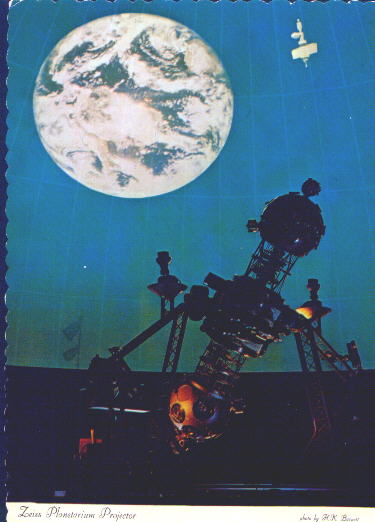
Completely enshrouded by clouds, Earth's closest neighbor, Venus, may be the first planet to
be visited by NASA astronauts, but only the atmosphere 30 miles above the surface.
(Image Sources: NASA, Wikipedia.org )
A floating city above Venus? That’s one concept being floated by NASA as a way of studying our inhospitable neighbor.
While Mars typically gets all of the attention due to the possibility that it once hosted life, Venus is actually Earth’s closest neighbor, and NASA would like to get to know it better. One of the ways to do that may be to float a “blimp city” about 30 miles above the scorching hot surface of Venus for about 30 days to allow astronauts to study it, according to a CNN report.
NASA is exploring the concept, which would initially be temporary and could eventually lead to a permanent floating city.
Once you get to an altitude of 30 miles, the conditions are similar to that of Earth — perhaps more so than anywhere else in the entire solar system.
The gravity is just a little lower than Earth, the atmospheric pressure is similar, and there is still ample protection from solar radiation.
As a result, NASA has come up with the High Altitude Venus Operational Concept (HAVOC), and the agency is working on a preliminary feasibility study on how to make such an extraordinary mission happen.
More - Link >>> http://thespacereporter.com/2014/12/a-floating-city-above-venus-nasa-has-begun-work-on-the-extraordinary-concept/
Also CNN Report - "NASA's plan for an off-world colony: a floating city above Venus":
Link >>> http://www.cnn.com/2014/12/23/tech/innovation/tomorrow-transformed-venus-blimp-city/
Sources: The Space Reporter, Cable News Network.
2014: 75th Year of Pittsburgh's Buhl Planetarium

Want to receive SpaceWatchtower blog posts in your inbox ?
Send request to < spacewatchtower@planetarium.cc >..
gaw
Glenn A. Walsh, Project Director,
Friends of the Zeiss < http://buhlplanetarium.tripod.com/fotz/ >
Electronic Mail - < gawalsh@planetarium.cc >
SpaceWatchtower Blog: < http://spacewatchtower.blogspot.com/ >
Also see: South Hills Backyard Astronomers Blog: < http://shbastronomers.blogspot.com/ >
Barnestormin: Writing, Essays, Pgh. News, & More: < http://www.barnestormin.blogspot.com/ >
About the SpaceWatchtower Editor / Author: < http://buhlplanetarium2.tripod.com/weblog/spacewatchtower/gaw/ >
SPACE & SCIENCE NEWS, ASTRONOMICAL CALENDAR:
< http://buhlplanetarium.tripod.
Twitter: < https://twitter.com/spacewatchtower >
Facebook: < http://www.facebook.com/pages/
Author of History Web Sites on the Internet --
* Buhl Planetarium, Pittsburgh:
< http://www.planetarium.
* Adler Planetarium, Chicago:
< http://adlerplanetarium.
* Astronomer, Educator, Optician John A. Brashear:
< http://johnbrashear.tripod.com >
* Andrew Carnegie & Carnegie Libraries:
< http://www.andrewcarnegie.
* Civil War Museum of Andrew Carnegie Free Library:
< http://garespypost.tripod.com >
* Duquesne Incline cable-car railway, Pittsburgh:
< http://inclinedplane.tripod.
* Public Transit:
< http://andrewcarnegie2.tripod.
How the floating City over Vinous would look like?
ReplyDeleteThen how long it may take to reach there? and back?
From a distance just of 30 miles How Vinous would look?